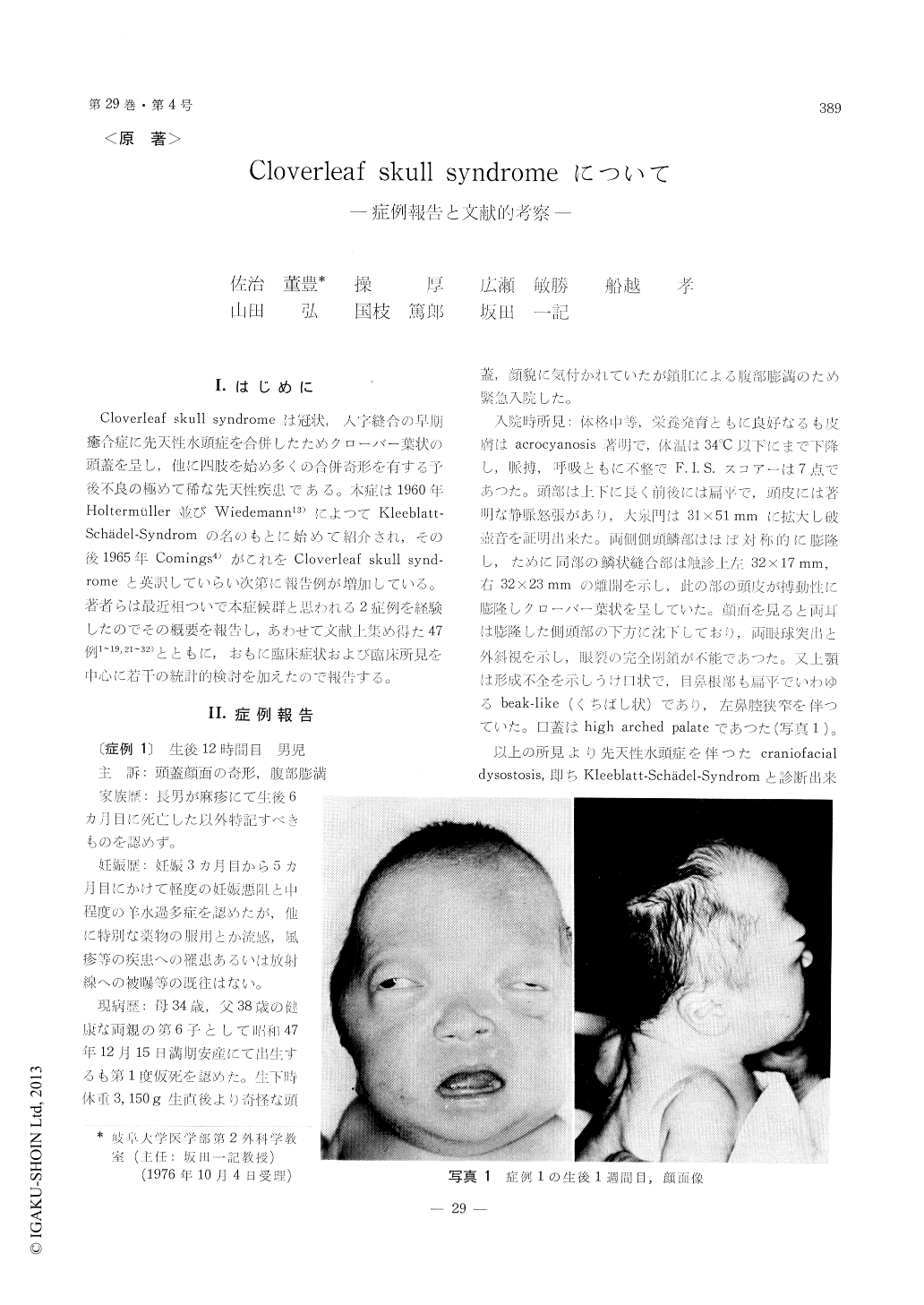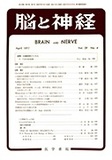Japanese
English
- 有料閲覧
- Abstract 文献概要
- 1ページ目 Look Inside
I.はじめに
Cloverleaf skull syndromeは冠状,人字縫合の早期癒合症に先天性水頭症を合併したためクローバー葉状の頭蓋を呈し,他に四肢を始め多くの合併奇形を有する予後不良の極めて稀な先天性疾患である。本症は1960年Holtermuller並びWiedemann13)によつてKleeblatt—Schädel-Syndromの名のもとに始めて紹介され,その後1965年Comings4)がこれをCloverleaf skull synd romeと英訳していらい次第に報告例が増加している。著者らは最近相ついで本症候群と思われる2症例を経験したのでその概要を報告し,あわせて文献上集め得た47例1〜19,21〜32)とともに,おもに臨床症状および臨床所見を中心に若干の統計的検討を加えたので報告する。
Two cases of the cloverleaf skull syndrome were reported and 49 cases, including ours, of this syndrome reported in the world literature were reviewed.
Case 1 was a 12 hour old male baby at the time of admission to our hospital. Besides the cloverleaf skull syndrome, he had atresia ani, malrotation and retentio testis. He died at 54 days of age.
Case 2 was 2 day old male baby at the time of admission. Besides the cloverleaf skull syndrome he had retentio testis and congenital dermal sinus-like anomaly in the coccygeal region. He died at 26 days of age. Chromosome studies in both cases showed a normal male karyotype
Review of the literatured on this syndrome gave the following results.
(1) In 92% of the cases ages at the time of admission were under one year. Sexual difference in incidence of this syndrome was not significant.
(2) The first born babies were most frequent in these cases. In 4 of them mothers' ages at their birth were over 30 years.
(3) There were a couple of siblings and a couple of twins in which the syndrome occurred familialy. In 4 cases some kinds of craniofacial dysostosis, other than the syndrome, were seen in their family.
(4) The major diagnostic features of this syn-drome included cloverleaf skull, hydrocephalus, exophthalmos, abnormalities of extremities, low set ear, beak-like nose, etc.
(5) Laboratory studies were grossly normal, but in some cases hypoglycemia, hypopituitarism and abnormal EEG findings were noticed.
(6) Plain skull roentogenograms revealed such findings as absence or bulging of the squamous portion of the skull, basilar hypoplasia or stenosis, synostosis of the coronal and lambdoid sutures, widening of the metopic and sagittal sutures, honey-combed appearance of the skull in the occipital region, etc.
(7) In 20 cases there were 30 associated anomalies in all, but none of them was characteristic of this syndrome.
(8) Recently surgical treatment for this syndrome has been attempted, but satisfactory cure still seems to be difficult.
(9) 20 of the 49 cases died within 24 hours after birth, and only 14 cases were surviving at the time of reporting.

Copyright © 1977, Igaku-Shoin Ltd. All rights reserved.


